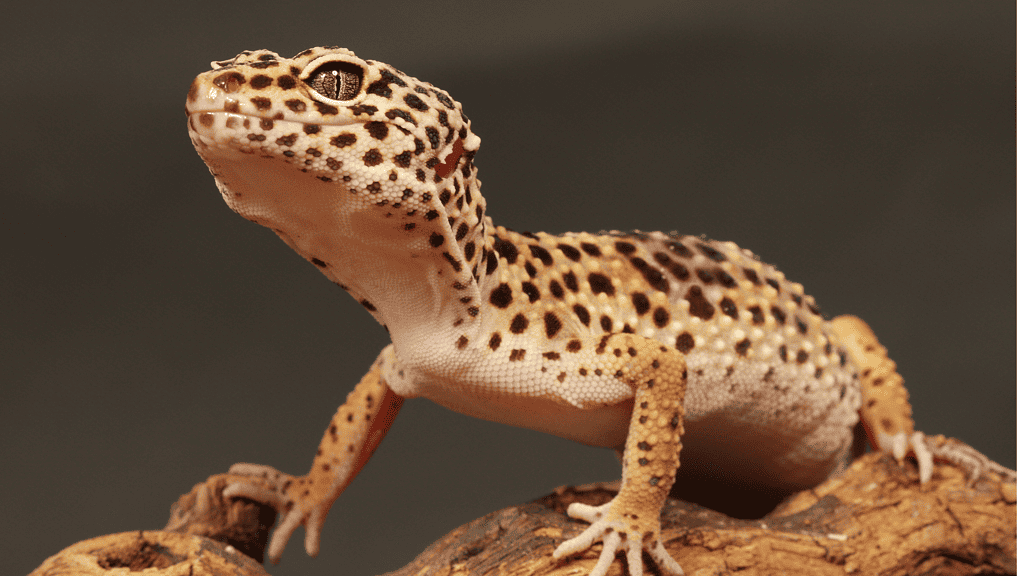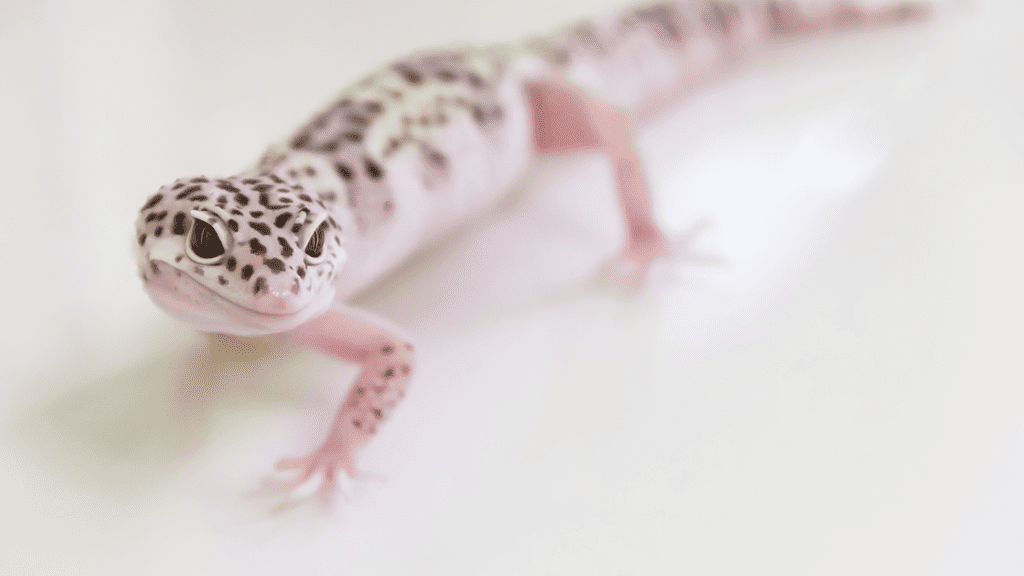Leopard geckos have extraordinary senses that aid them in hiding or getting their prey in captivity or in the wild. They have a highly developed sense of hearing, as well as smell, taste, and vision. But are leopard Geckos sensitive to light?

They certainly are. Leopard geckos have inherently light-sensitive eyes, and UVB and albinism make the eyes and skin of animals highly sensitive to light. Because of their sensitivity, they can take in more light, which is helpful when they are out in the wild and have to seek food and other resources.
Their sensitive eyes aren’t particularly useful in captivity because they only have crickets to hunt. But having sensitive eyes is very helpful when hunting in dim light, like at night when you are out in the wild. Continue reading this article, as it may be beneficial in providing you with further information regarding their eyes.
Can Leopard Geckos See Colours?
As a result of cones in their eyes, leopard geckos are capable of colour vision, even if the range of colours they see is limited compared to that of humans. More specifically, leopard geckos have the highest sensitivity to the colours blue and green. It is interesting to note that they cannot perceive the colour red.
Leopard geckos should have a standard incandescent light available throughout daylight hours. It’s better to use coloured light, especially yellow and red, as they are less sensitive to these colours (such as blue and green). Because leopard geckos are sensitive to blue, blue lightbulbs can cause eye injury if exposed for long periods.
It is crucial to note that exposure to UVA light during the daytime might improve the eyesight of the leopard gecko. Hence, buying such a light source can be the best financial decision. If you would like to keep your leopard gecko warm at night, you should only use heat pads and ceramic heat bulbs. Coloured night bulbs must be avoided.
The eyes of the leopard gecko are highly sensitive to light, which is why this is the case. Leopard geckos can perceive the light from a red bulb even though they can’t see red. However, if you want to keep a close eye on your leopard gecko while you sleep, you may leave these lights on for a few hours before you turn in for the night.
In addition to this, leopard geckos must have access to light during the day. In addition to facilitating their sleep cycle, it offers the warmth necessary for digestion and energy.
Which UV light is Best for Leopard Geckos?
There is a wide range of UV light intensities available on the market for use with lizards; some of these lamps provide a higher intensity of UV light than others. Therefore, a bulb with a percentage of 5% emits more UVB than a bulb with a percentage of 2%, for example.
It is usual practice to make the light intensity of a reptile’s artificial environment comparable to the light intensity of the reptile’s natural habitat. Species in the desert might benefit from the stronger light of a 5% bulb, while species that live in forests, where the light is more spread out, would usually be given a bulb with less power.
Leopard geckos are tropical lizards, although they spend much of the day hiding from the sun. Because of this, the common suggestion is to use a 2% UVB bulb.
When to Turn off a Leopard Gecko’s Lights?
If you are familiar with how the lights on your leopard gecko should be arranged, you will have a better idea of when it is appropriate to turn them off.
Set up your pet’s vivarium to look like its natural home. If you follow the gecko’s natural diurnal rhythm, which requires around 14 hours of sunshine during the summer and 12 hours of daylight during the winter, it doesn’t matter what time you switch the light to switch on and off.
If you want to set exact times for turning lights on and off, you could look up when sunrise and sunset are and set the light timer to match. On the other hand, given that your gecko will be basking in artificial light, you may also choose to stick to a standard routine. No matter what you choose, be consistent. The goal is to make it look like a natural sunrise or sunset.

How to Properly Light Your Gecko Cage
The following guidelines might be helpful for installing and operating the lights in your leopard gecko tank in the correct manner.
Provide Suitable Hides
There is a possibility that leopard geckos have delicate eyes and skin, neither of which would benefit from being exposed to an excessive amount of light. Imagine being stranded on a beach in the middle of the day without any protection from the sun, such as an umbrella. It might be enjoyable for a brief period, but at the end of the day, you might not be in nearly such a cheerful mood!
If you want to put lights in your gecko’s enclosure, you must ensure they have a secure means of exiting the cage anytime they choose. Artificial plants and reptile hides may create shaded regions. Your leopard gecko will be able to select the environment that is most favourable to them in this way.
Replace Bulbs Regularly
As time passes, UV lamps quit generating useful wavelengths. Even though the light may appear normal to human eyes, the amount of UVB generated will decrease. Because most light bulb manufacturers advise replacing the light every six to twelve months, you should keep track of the date you place the light.
Minimize Bulb Distance
UV radiation has a limited range of transmission. Your gecko will receive a diminishing return on its investment if they are kept at a greater distance from the bulb. If you want to give your leopard gecko light, try to leave as little space as possible between the bulb and the enclosure floor. If needed, cage decorations can be used to make a warm spot under the bulb.
Turn Off Nightlights
Even creatures who like to spend their time in the sun require the natural cycle of light and night. To make this process easier, turn off all of the lights as it becomes dark. This includes so-called “night lights,” occasionally offered to reptile keepers who wish to monitor their nocturnal creatures moving about the enclosure.
Supplement with Calcium
UV light won’t prevent skeletal issues if your gecko doesn’t obtain enough calcium. To ensure that your leopard gecko is getting an adequate amount of calcium, it is a good idea to sprinkle some high-quality calcium powder on its diet now and again.
Are Albino Leos Light-Sensitive?
They are not. There is a widespread misconception that albino Leos are sensitive to light. This is not the case. Even though Leos are nocturnal and do not like being exposed to intense sunlight, this does not mean they are sensitive to light.
These animals don’t care how much light there is until they have somewhere to hide during the day. Because they are nocturnal, leopard gecko morphs of any kind will avoid exposure to intense lighting.
